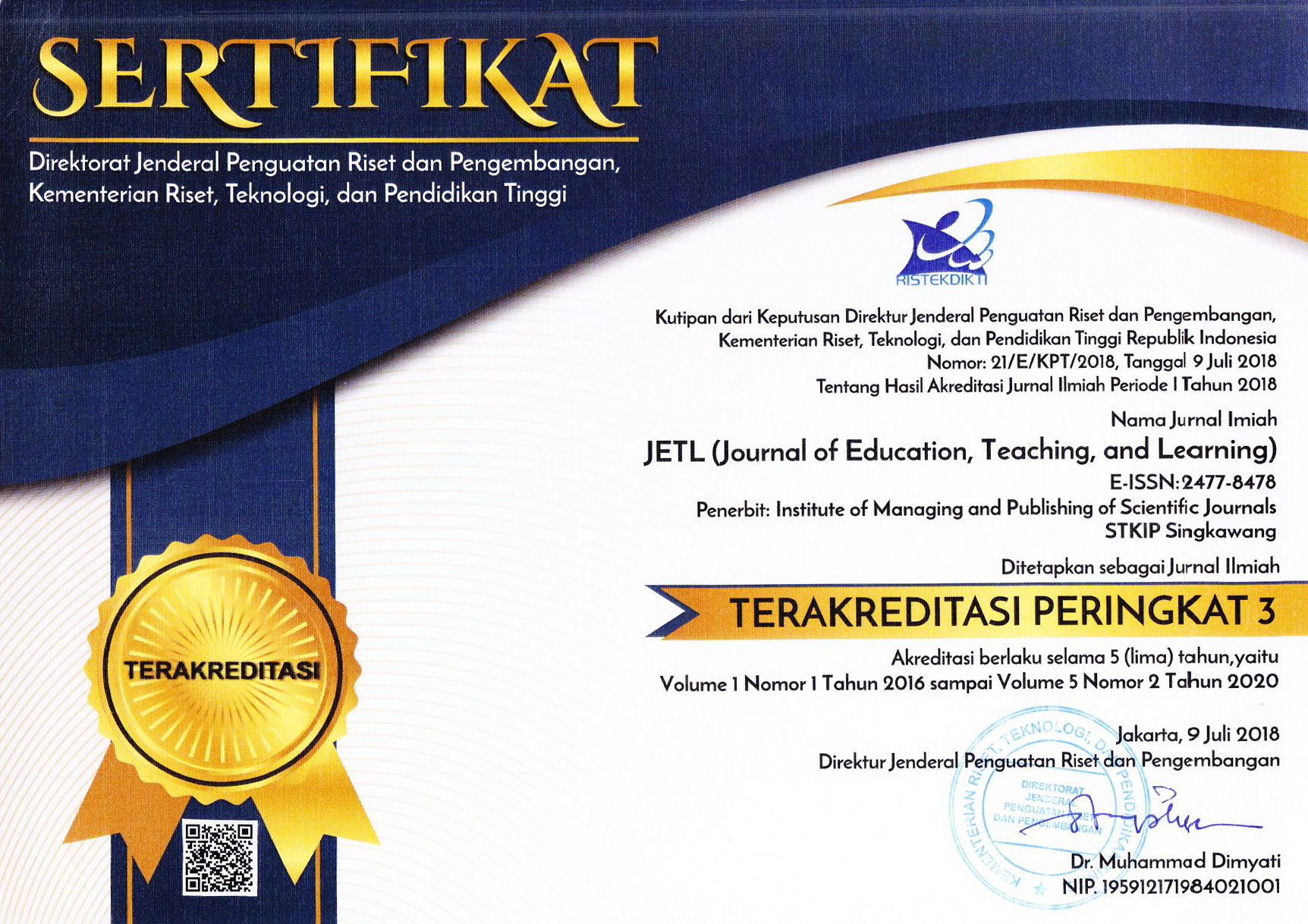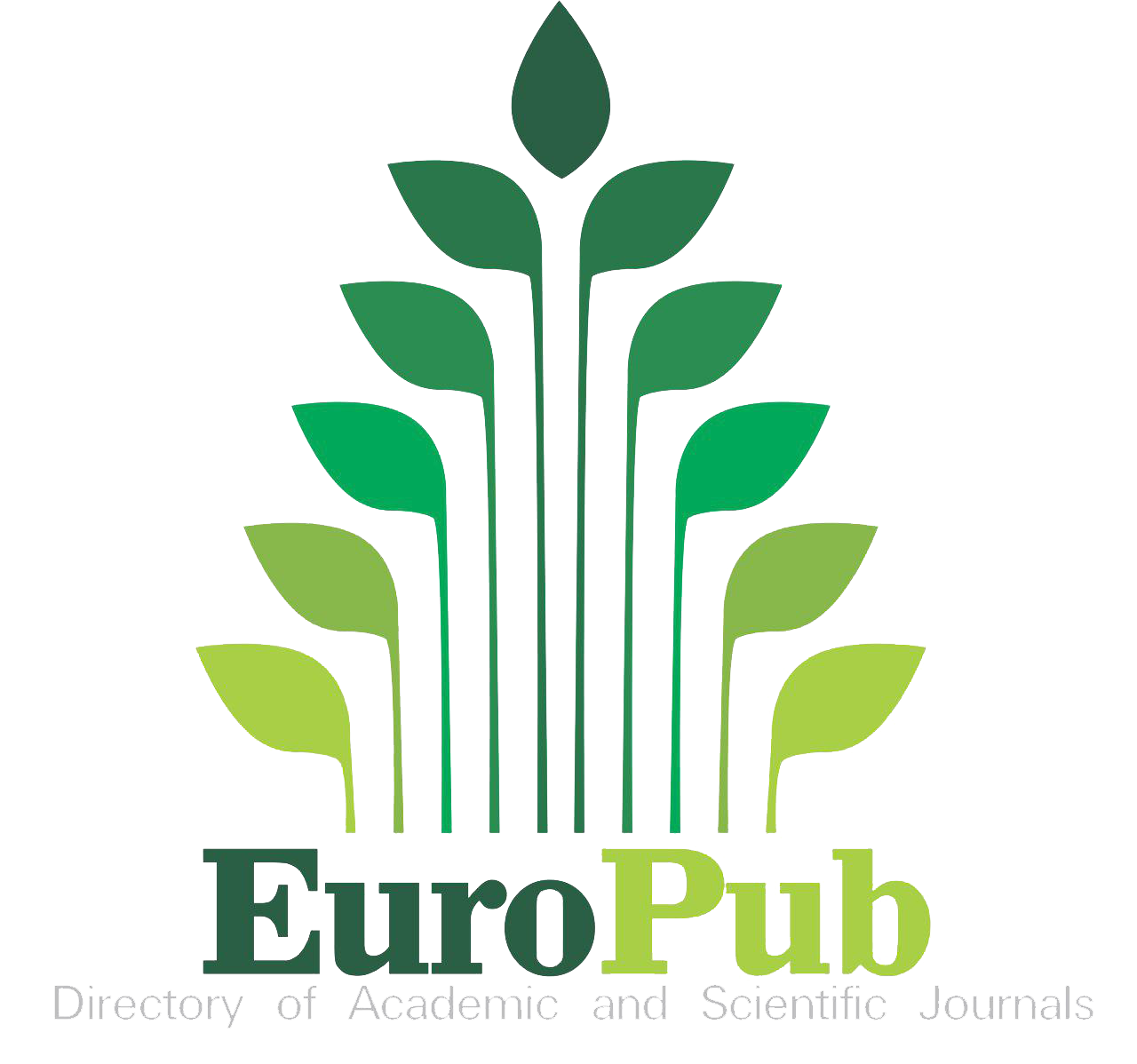The Effect of Non-Routine Geometry Problem on Elementary Students Belief in Mathematics: A Case Study
Abstract
Keywords
Full Text:
PDFReferences
Alim, E. S., Rohim, S., & Umam, K. 2015.Integration of Reciprocal Teaching-ICT Model to Improve Students’ Mathematics Critical Thinking Ability’. In Proceedings of the 23rd International Conference on Computers in Education (ICCE 2015), Hangzhou, China (pp. 483-487).
Beswick, K. 2007. Influencing teachers’ beliefs about teaching mathematics for numeracy to students with mathematics learning difficulties. Mathematics teacher Education and Development, 9, 3–20.
Dembo, Y., Levin, I., & Siegler, R. S. 1997. A Comparison of The Geometric Reasoning of Students Attending Israeli Ultraorthodox and Mainstream Schools. Developmental Psychology, 33, 92–103.
Holyoak, K. J., & Thagard, P. (1989). Analogical Mapping by Constraint Satisfaction. Cognitive Science, 13,295–355.
Hart, L. C. 2002. Pre-service teachers’ beliefs and Practices After Participating in An Integrated Content/Method Course. School Science and Mathematics, 102(1), 4–14.
Katz, V. 2000. Using History to Teach Mathematics: An International Perspective. Washington, DC: The Mathematical Association of America.
Kloosterman, P. 2002. Beliefs about Mathematics and Mathematics Learning in The Secondary School: Measurement and Implications For Motivation. In G. C. Leder, E. Pehkonen, & G. Torner (Eds.), Beliefs: A hidden variable in mathematics education? (pp. 13–37). Norwell, MA: Kluwer.
National Council of Teachers of Mathematics. 2000. Principles and Standards For School Mathematics. Reston, VA: Author.
Nigus, Hailu, & Abraham, Solomon. 2014. The Effect of An Historical Perspective on Prospective Teachers’ Beliefs in Learning Mathematics. J Math Teacher Educ 17: Page 303–330.
Nurhayati, N. (2016). The Effectiveness of the Collaborative Learning Model on Trigonometry Topic of Senior High School Student Graduate X Using Open-ended Approach. JETL (Journal Of Education, Teaching and Learning), 1(1), 13-17.
Schoenfeld, A. H. 1992. Learning to Think Mathematically: Problem Solving, Metacognition, and Sense Making in Mathematics. In D. A. Grouws (Ed.), Handbook of research in mathematics education (pp. 334–370). New York: Macmillan Publishing.
Sriraman, B. 2004. Gifted Ninth Graders’ Notions of Proof. Investigating Parallels in Approaches of Mathematically Gifted Students and Professional Mathematicians. Journal for the Education of the Gifted, 27(4), 267–292.
Tsamir, Pessia & Tirosh, Dina. 2002. Beliefs: A Hidden Variable in Mathematics Education?. Kluwer Academic Publisher.
Stavy, R., & Babai, R. (2010). Overcoming Intuitive Interference in Mathematics: Insights From Behavioral, Brain Imaging, and Intervention Studies. ZDM - International Journal on Mathematics Education, 42(6), 621–633. https://doi.org/10.1007/s11858-010-0251-z
Umam, K., 2016. Pengaruh Menggunakan Software Macromedia Flash 8 Terhadap Hasil Belajar Matematika Siswa Kelas VIII. Jurnal Kalamatika, 1(1), pp.84-92.
Umam, K., 2014. Pemahaman Siswa Dalam Pemecahan Masalah Matematika Berdasarkan Gaya Belajar Divergen. Jurnal Inovasi Pendidikan Dasar,1(1), pp.84-94.
Umam, K., Purwanto, S. E., & Aprilina, C. N. 2016. Penggunaan Model Problem Based Learning Dengan Bantuan Software Geogebra Untuk Meningkatkan Hasil Belajar Matematika Siswa. Prosiding Konferensi Nasional Pendidikan Matematika-VI Universitas Negeri Gorontalo. Page 187-199.
Umam, K., Suswandari, Asiah, N., Wibowo, I. T., & Rohim, S. 2017.The Effect of Think-Pair-Share Cooperative Learning Model Assisted With ICT on Mathematical Problem Solving Ability among Junior High School Students. Workshop Proceedings of the 25th International Conference on Computers in Education (ICCE 2017). New Zealand: Asia-Pacific Society for Computers in Education, (Page 94-98).
Purnomo, Y.W., 2017. A Scale for Measuring Teachers' Mathematics-Related Beliefs: A Validity and Reliability Study. International Journal of Instruction, 10(2).
Permana, R., Sabirin, F., & Feladi, V. (2016). EFFECT OF SELF EFFICACY AND PRIOR KNOWLEDGE ON STUDENTS’SKILLS. JETL (Journal Of Education, Teaching and Learning), 1(2), 76-81.
DOI: http://dx.doi.org/10.26737/jetl.v3i1.552
Refbacks
- There are currently no refbacks.

This work is licensed under a Creative Commons Attribution-NonCommercial 4.0 International License.
Published by:
Institute of Managing and Publishing of Scientific Journals STKIP Singkawang
Sekolah Tinggi Keguruan dan Ilmu Pendidikan (STKIP) Singkawang
Address : STKIP Singkawang, Jalan STKIP - Kelurahan Naram Singkawang, Kalimantan Barat, INDONESIA, 79251
No. Telp. : +62562 420 0344
No. Fax. : +62562 420 0584
JETL (Journal of Education, Teaching, and Learning)
e-ISSN : 2477-8478
p-ISSN : 2477-5924

Editor in Chief Contact: [email protected] / Wa: +6282142072788
Publisher Contact: [email protected] / Wa: +6282142072788
Management Tools
JETL Indexed by:
JETL (Journal of Education, Teaching, and Learning) is licensed under a Creative Commons Attribution-NonCommercial 4.0 International License.











